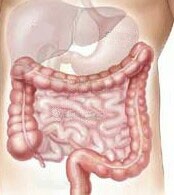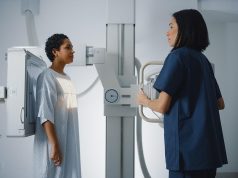Diffuse reflectance spectroscopy-fluorescence spectroscopy sensitive, specific in colorectal cancer
TUESDAY, Sept. 8, 2015 (HealthDay News) — Dual-modality diffuse reflectance spectroscopy-fluorescence spectroscopy (DRS-FS) can differentiate tumor tissue from surrounding tissue in patients undergoing colorectal cancer resection, according to a study published in the September issue of Lasers in Surgery and Medicine.
Gerrit C. Langhout, M.D., from the Netherlands Cancer Institute in Amsterdam, and colleagues examined the feasibility of dual-modality DRS-FS for discrimination between healthy and malignant tissue in colorectal surgery. A fiber-optic needle capable of dual-modality DRS-FS was used to measure surgical specimens from colorectal cancer patients immediately after resection. Scattering and absorption coefficients and intrinsic fluorescence were derived from model-based analyses. The researchers estimated volume fractions of chromophores. Along a trajectory from healthy tissue toward tumor, optical data were recorded.
The researchers identified spectral characteristics in 1,273 measured spectra from 21 specimens. For combined DRS and FS, the sensitivity was 95 percent and specificity 88 percent for discriminating tumor from surrounding tissue. Along the trajectory from healthy tissue to tumor there were significant spectral changes.
“The quantification of comprehensible parameters allows robust classification and facilitates extrapolation towards the clinical setting,” the authors write. “The technique, here demonstrated in a needle-like probe, can be incorporated into surgical tools for optically guided surgery in the near future.”
One author is an employee of Philips Research.
Copyright © 2015 HealthDay. All rights reserved.








